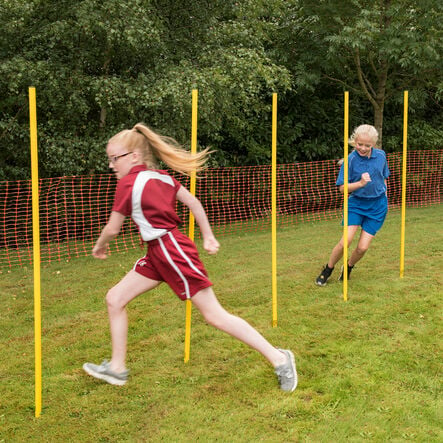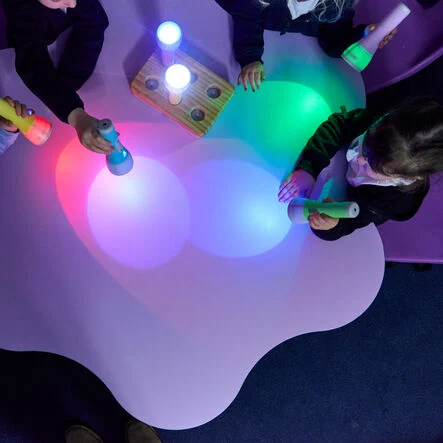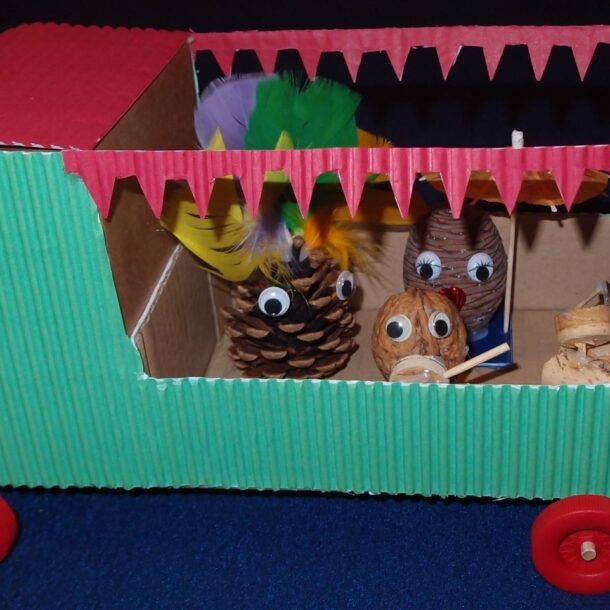You can either use them as a fun activity to explore or turn them into a science experiment using the ‘make it an experiment’ hint. We also have a downloadable experiment planner to help.
Please be careful and make sure children have adult supervision when exploring these activities. They are great fun for adults too, so join in and get involved!
Jumping Pepper
You will need:
- Plastic container with lid
- Ground Pepper
- Wool (scarf, sweater etc.)
Method:
1. Find a shallow plastic container (with a lid) and sprinkle a thin layer of pepper across the bottom of it. Put the lid on.
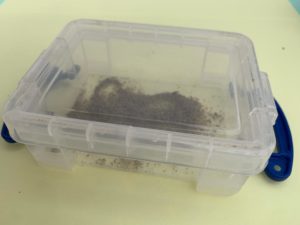
2. Rub the lid for about half a minute with something woollen (scarf, sweater). Stop rubbing and watch.
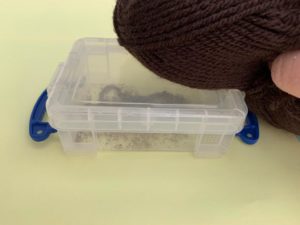
3. Specks of pepper will jump up and stick to the lid. Try touching the lid with a metal paperclip – what do you notice?

Make it an experiment:
- Does the depth of the container make a difference?
- Does it matter how thick the plastic is?
- Do you have to use pure wool?
Science behind it:
- Rubbing the lid creates static electricity, which attracts the pepper and causes it to ‘jump’ to the lid. When you touch the metal paperclip to the lid, the static is transferred to the metal and so the pepper drops down or moves.
Paper planes
You will need:
- Paper
Method:
1. Fold a piece of A4 paper in half so that the long edges meet. Open it out and fold the top corners to the crease.
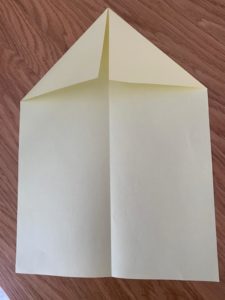
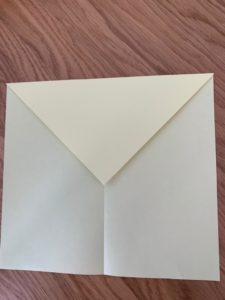
2. Fold down the top triangle shape so that the point lines up with the middle crease.
3. Fold down the corners at the top so that they meet just above the triangle. Fold the tip of the triangle so that it overlaps the flaps.
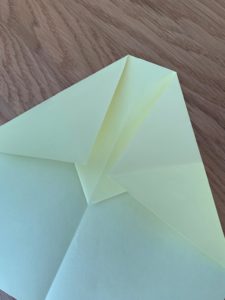
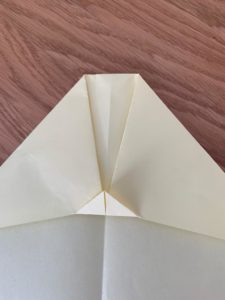
4. Turn the paper over and fold it down the middle crease.
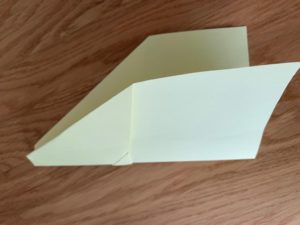
5. Fold both sides down to make a flat nose at the front of your plane. Throw it and see how far it goes!
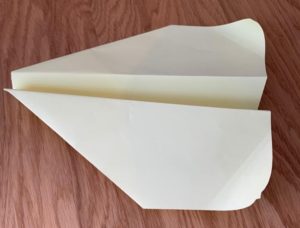
Make it an experiment:
- Try out different paper plane designs and test them out e.g. which one flies the highest? Which one flies the furthest? What happens if you curl the tips of the wings?
Science behind it:
- The front of the wings being thickest helps the plane to fly. Curling the wing tips changes the air flow. Curling them up makes the plane climb and curling them down makes the plane dive.
Musical Bottles
You will need:
- Different sized bottles
- Water
- Food colouring (optional)
Method:
- Collect a variety of different bottles.
- Pour different amounts of water into the bottles. You can add food colouring if it helps you to see the water level.
- Rest the neck of one bottle on your lower lip. Blow gently across the top until you hear a note.
- Repeat with all of the bottles. What do you notice?
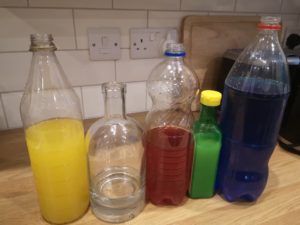
Make it an experiment:
- Does the height, width or volume of the bottle make a difference?
- Is there any difference between glass or plastic bottles?
Science behind it:
- When you blow across the bottle, the air inside the bottle vibrates. This produces a note. The notes change according to the amount of water and air in the bottle. The bigger the space between the water and the top of the bottle, the lower the note.
Pepper and Soap
You will need:
- Shallow Bowl
- Water
- Pepper
- Washing Up Liquid
- Toothpick/Cocktail Stick
Method:
- Half fill a bowl with water.
- Sprinkle pepper evenly across the surface. The pepper should float on top of the water.
- Dip the tip of a cocktail stick in washing up liquid.
- Touch the tip of the cocktail stick in the middle of the water and watch what happens
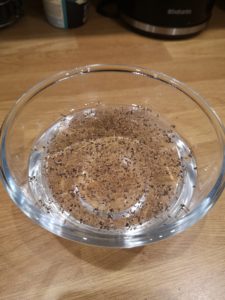
Make it an experiment:
- Does this only work with pepper? Will it work with anything else in your cupboards?
- Does this only work with washing up liquid?
Science behind it:
- Pepper floats because it is hydrophobic (water is not attracted to it). This means that the pepper does not dissolve in the water. Washing up liquid reduces the surface tension of the water. This makes the particles of water spread out and push away from the washing up liquid. As they spread out, they push the pepper specks too.
Tie-Dyed Milk
You will need:
- Shallow Bowl
- Milk (semi-skimmed or whole milk)
- Food colouring
- Washing Up Liquid
- Toothpick/Cocktail Stick
Method:
1. Half fill a small bowl with milk.
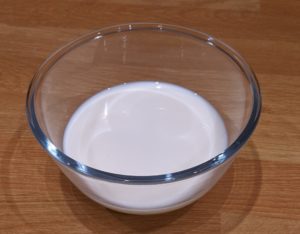
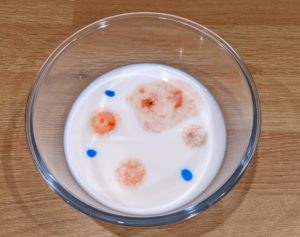
2. Add two to three drops of food colouring in different places around the surface of the milk.
3. Dip the tip of a cocktail stick in washing up liquid.
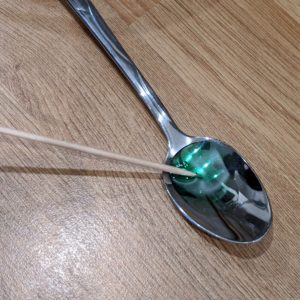
4. Touch the tip of the cocktail stick in the middle of the milk and watch what happens.
Make it an experiment:
- Does this only work with washing up liquid?
- Does the shape of the dish affect the reaction?
Science behind it:
- Food colouring floats on the surface of the milk because it is less dense than the milk. The washing up liquid reduces the ‘surface tension’ of the milk by trying to dissolve the fat molecules in the milk (which is why fattier milk works better). This makes the milk pull away from the washing up liquid. As it spreads out, the food colouring moves with the surface of the milk.
Lava
You will need:
- A clear glass
- Vegetable Oil (approx. ¼ cup)
- 1 teaspoon of salt
- Water
- Food colouring
Method:
1. Fill the glass about ¾ full of water.
2. Add approximately 5 drops of food colouring.
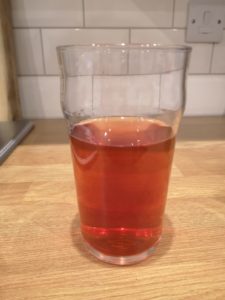
3. Slowly pour the oil into the glass. What happens?
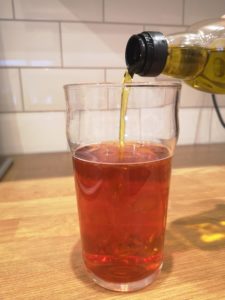
4. Sprinkle the salt slowly on top of the oil and watch what happens.
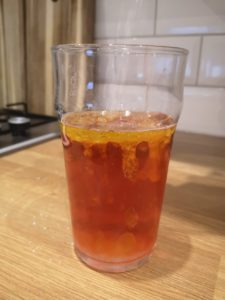
Make it an experiment:
- Do different kinds of oil give different effects?
- Do other substances work the same as salt, e.g. sand, sugar?
- Does the shape/height of the glass affect the experiment?
Science behind it
- Firstly, the oil floats on top of the water because it is lighter than water. Salt is heavier than oil, so as it sinks down into the water, it takes the oil with it. When the salt dissolves, the oil goes back up!
Have a go at these and tag us online so that we can see your science experiments!


